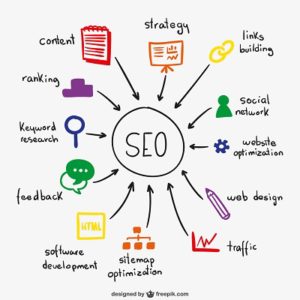 While organic search results are always desirable, the amount of time most companies spend on SEO is minimal. If you’re lost or confused as to what you should be doing to get those organic listings, if you spend just an hour a day, the following is a 15-day roadmap that should get you on your way.
While organic search results are always desirable, the amount of time most companies spend on SEO is minimal. If you’re lost or confused as to what you should be doing to get those organic listings, if you spend just an hour a day, the following is a 15-day roadmap that should get you on your way.
Day 1 – Defining Goals
Benjamin Franklin said, “Those who fail to plan, plan to fail.” Those words are just as true when it comes to your marketing plans. You need to set goals that are specific, measurable, achievable, results-focused, and timed (S.M.A.R.T). An effective marketing plan will include short, medium, and long-term goals.
Day 2 – Verifying Goals are Achievable
While settings goals is the first step, it’s not the only one. While the goal of a business may be to increase sales, it should also be determined what part of those sales should come from organic search results and to then measure the growth.
Day 3 – Identifying Additional Keywords
It’s important to target keywords that can generate the kind of traffic that you will need to make your sales goals. But you will need to continue to monitor those keywords and search for variations that people may be looking for. Your website analytics may also reveal keywords that people are finding your website from that you may not have even considered.
Day 4-5 – On-Page Review
On-page SEO is crucial to the foundation of your SERPs. Poor on-page optimization can even hinder your off-page efforts. Your focus for on-page SEO should be on two areas: technical issues and keyword optimization.
Day 6-8 – Creating Content
Your site’s content is the best way to promote your business. Write about topics that are useful and compelling. Search for topics that are currently performing well and write about them. Not sure where to start? You can use a tool like Buzzsumo to find content for topics that are performing well currently.
Day 9-11 – Fixing On-Page SEO
This is the time to fix any technical or keyword issues for your content. Focus on the on-page SEO for your new articles before publishing and promoting them.
Day 12 – Content Promotion Prospecting
After creating and publishing your content, you will need to find people to link to it. Tools like Majestic will identify websites already linking to similar content. A search of your primary keywords/topics will produce a list of sites for you to put into a spreadsheet. Find a contact name and email for each of these sites. You will want a list of at least 200 contacts.
Day 13-14 – Promoting Content
You will now want to contact each of the 200 contacts you uncovered yesterday. A tool, such as Sidekick, will allow you to track the email opens and clicks. Create a template that will allow you to easily insert the relevant information for each contact.
After contacting each of the 200 contacts, go back to Buzzsumo and find others that are sharing similar information and contact them as well.
Day 15 – Repeating Regularly
Depending on the success of your initial campaign, you will start the process over again either from day 3 where you are identifying additional keywords or day 12 where you are discovering additional promotional opportunities.